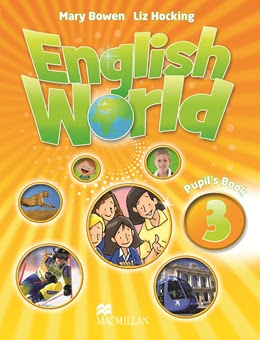Here are the materials I used to supplement the Reading on pages 48-50 of English World 3.
A PowerPoint for all of the vocabulary in the reading (slides, pub)
In the CELTA, we are taught only to teach blocking vocabulary for meaning. But ever since I read The Lexical Approach by Michael Lewis (review coming eventually), I've been trying to use every opportunity to exploit every passage for as much vocabulary as possible. (I'm not sure Michael Lewis himself would approve of this application of his approach, but I'll try to sort some of these nuances out when I eventually get around to reviewing his book.)
Also, I made a worksheet for the reading in which students have to identify what each pronoun refers to. (docs, pub).
This idea comes from I.S.P Nation's book: Teaching ESL/EFL Reading and Writing . Nation writes that most reading comprehensive exercises in textbooks only test how well the students are understanding the reading, instead of actually helping them to understand it better. He suggests exercises like this to bring students awareness of cohesive devices instead of the usual textbook questions, so I've substituted these questions in instead of the questions that come form the textbook.
Lastly is a PowerPoint for the arts and crafts section of the reading on page 49. (slides, pub)
This is exactly the same as the textbook, but I found it useful to cut and copy the various steps onto a PowerPoint to ensure all the students knew what step we were currently on as we proceeded through this activity in lock-step.
A hundred years ago many people travelled across America. (1)They needed houses and fields. (2)They were the first pioneers. A pioneer does something first. (3)These people travelled across America first.
(4)They stopped near a river. (5)They needed food and water. (6)They used axes and (7)they chopped down trees. The horses pulled the logs with ropes. The men lifted one log on top of another log. (8)These were the walls of their house.
Inside there were two rooms. In one room there was a fire. The women cooked food in big pots. The children helped. (9)They picked up wood for the fire. (10)They fetched water from the river.
There were not many toys. The girls skipped with a rope. The boys played skittles. All the children played a game with a cup and a ball. You can make this game, too.
What do the pronouns refer to?
(1)_________________________
(2)_________________________
(3)_________________________
(4)_________________________
(5)_________________________
(6)_________________________
(7)_________________________
(8)_________________________
(9)_________________________
(10)_________________________







No comments:
Post a Comment